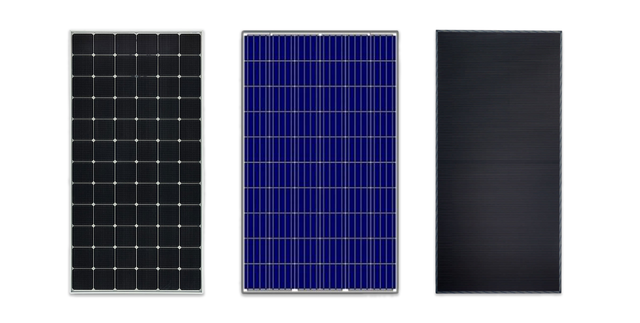Solar Systems Fundamentals Explained
Wiki Article
9 Easy Facts About Solar Systems Explained
Table of ContentsGet This Report about Solar SystemsSolar Systems Things To Know Before You BuyThe 25-Second Trick For Solar SystemsFascination About Solar Systems
There are 3 various types of solar panels: monocrystalline, polycrystalline, and also thin film. Monocrystalline solar panels are highly efficient and also have a smooth layout, however come with a greater cost point than various other photovoltaic panels. Polycrystalline photovoltaic panels are cheaper than monocrystalline panels, nevertheless, they are less efficient and also aren't as cosmetically pleasing.Nowadays, there are several ranges of monocrystalline solar panels on the market to pick from., are ending up being a progressively popular monocrystalline choice.
Since monocrystalline solar batteries are made of a single crystal of silicon, electrons are able to conveniently move throughout the cell, enhancing total efficiency. Not only do monocrystalline panels have the greatest performance ratings, they usually additionally have the highest possible power ability ratings. Most monocrystalline panels on the marketplace today will have a power result score of at the very least 320 watts, yet can increase to around 375 watts or higher!.
Due to the fact that polycrystalline cells include numerous silicon cells, the electrons can stagnate as quickly and also as a result, reduce the performance of the panel. The lower effectiveness of polycrystalline panels additionally suggests they tend to have a reduced power result than monocrystalline panels, typically ranging in between 240 watts and also 300 watts.
Solar Systems Fundamentals Explained
In order to fulfill your energy needs, you would certainly require to install even more slim movie panels over a big area to generate the same quantity of power as crystalline silicon solar panels. This is why thin film solar panels don't really make sense for residential setups where area is restricted.The temperature coefficient informs you just how much the power output will certainly reduce by for every 1 * C over 25 * C the panel gets. The standard temperature coefficient for mono and polycrystalline panels normally drops somewhere between -0.
With some slim film panels, it's difficult to even see the specific cells within the panel. They likewise tend to have less electrical wiring as well as busbars, indicating there's less white room. Because they are so ineffective, you would certainly need to cover your whole roofing system in slim movie panels - which may or may not be your design.

Some suppliers have functioned around this with black packing or shaping the cells in a different way, however these visual changes can affect both the price and also efficiency of the panels. On the whole, monocrystalline panels still look streamlined, but they're a bit extra noticable than slim film panels. solar systems. The process in which polycrystalline solar batteries are manufactured causes the cells to have a blue, marbled look.
Unknown Facts About Solar Systems
If you're on a limited spending plan, polycrystalline panels might make even more sense for you. We do not advise over here thin movie solar panels for household setups - their efficiency as well This Site as resilience do not make the affordable worth it, and it's not likely you'll have almost enough area to install the number of slim film panels you would require to cover your household power usage.Considering that they are made from pure silicon, they can be readily determined by their dark black shade. The use of pure silicon likewise makes monocrystalline panels one of the most space-efficient and longest-lasting amongst all three solar panel kinds. This comes at a price a lot of silicon is squandered to create one monocrystalline cell, occasionally getting to over 50%. solar systems.

Amorphous silicon panels visit their website (A-Si) acquire their name from their shapeless nature. Unlike mono-and polycrystalline solar cells, the silicon is not structured on the molecular degree. Generally, an a-Si cell calls for just a fraction of the silicon needed to create normal silicon cells. This permits them to have the most affordable production expense, at the cost of efficiency.
Getting My Solar Systems To Work
$0. 32-$0. 65 $1 $1. 50 $0. 70 $1 $0. 60 $0. 70 $0. 50 $0. 60 $0. 43 $0. 50 Note that these numbers don't include the expense of setup as well as labor. With labor as well as various other above aspects, the overall can increase to $2. 50 to $3. 50 per watt.
This suggests that thin-film panels can be a great alternative for hotter settings or places that experience more sunlight throughout the year. The upgraded International Building regulations of 2012 requires solar panels to match the fire score of the roof covering where they are installed. This is to make certain that the components do not accelerate the spread of flames in the event of a fire.
Report this wiki page